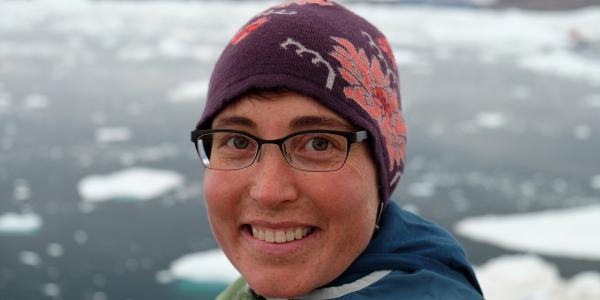Transformed: Observations and Implications of Rapid Reconfiguration of the Greenland Ice Sheet
This colloquium is co-sponsored by the Department of Earth and Planetary Sciences and the WashU Climate Change Program.
The Greenland Ice Sheet has now lost ice mass every year since 1998. While broadscale mass loss is well documented, limits in early remote sensing technology restricted the detail with which we could examine local changes on an ice-sheet-wide scale. Areas of slow motion, glacier shear margins, and complex coastal terrain proved especially challenging. Using newly processed satellite-derived ice sheet surface velocities, glacier terminus advance/retreat records, and surface elevation-change data spanning ~1985-2015, we are now able to see ice sheet changes in unprecedented detail. We ask: what is the local character of rapid ice sheet mass loss, and likely implications? We find that widespread glacier terminus retreat is a strong and more consistent climate response indicator than velocity change, but local changes in velocity provide key indicators of rapid ice sheet reconfiguration. Reconfiguration is observed locally as narrowing zones of fast-flow, ice flow rerouting, and likely glacier outlet abandonment. Evidence of these patterns is apparent in all ice sheet sectors. The rapid reconfiguration now well underway in Greenland has wide-ranging implications, including expected changes in subglacial hydrology, solid ice discharge, freshwater flux to the ocean, and transport of nutrients and sediment. Lacking detailed observations of earlier deglaciations and with current limits on ice-sheet model capabilities, the expanding detail of these combined observational records may provide a valuable analogue for studying past ice sheet dynamics and for projecting future ice loss.
Speaker Bio
Twila A. Moon is the Deputy Lead Scientist at the National Snow and Ice Data Center, part of the University of Colorado Boulder’s Cooperative Institute for Research in Environmental Sciences, a world leader in Earth science. Moon is an expert in contemporary glacier and ice sheet changes, and the connections among ice, climate, ocean, and ecosystem. While she has conducted work across the globe, her primary focus is on the Greenland Ice Sheet and the Arctic. Her work has been published in high-impact journals such as Science and Nature, and received extensive media coverage; for example, National Public Radio, the Associated Press, and the BBC. She is an accomplished science communicator and is leading efforts to improve science and knowledge co-production between scientists and stakeholders. Moon has a BS in Geological and Environmental Sciences (Stanford) and an MS and PhD in Earth and Space Sciences (University of Washington). She conducted research at the University of Colorado, University of Oregon, and University of Bristol (UK) before returning to the National Snow and Ice Data Center in 2017. Additional information on her work is available at www.changingice.com.
By joining department-hosted virtual colloquia, you agree to uphold our code of conduct for Zoom sessions.
